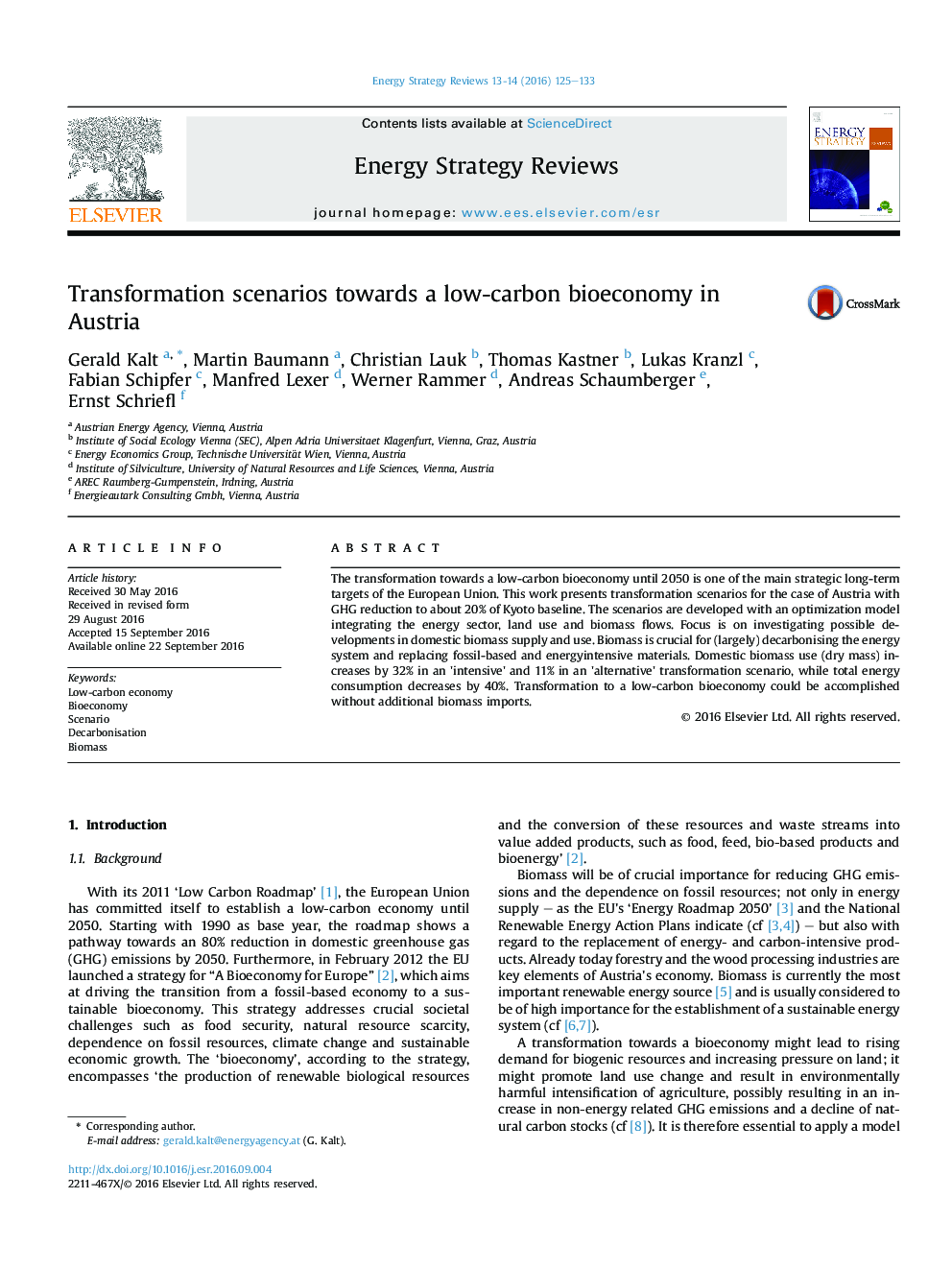| کد مقاله | کد نشریه | سال انتشار | مقاله انگلیسی | نسخه تمام متن |
|---|---|---|---|---|
| 6481309 | 1483526 | 2016 | 9 صفحه PDF | دانلود رایگان |
- Transformation scenarios to a low-carbon bioeconomy in Austria.
- Optimization model integrating the energy sector, land use and biomass flows.
- 2 Pathways to GHG emission levels of about 20% of Kyoto baseline in 2050.
- Biomass use increases by 11% in one and 32% in the other scenario (2010-2050).
- Transformation is technically feasible without additional biomass imports.
The transformation towards a low-carbon bioeconomy until 2050 is one of the main strategic long-term targets of the European Union. This work presents transformation scenarios for the case of Austria with GHG reduction to about 20% of Kyoto baseline. The scenarios are developed with an optimization model integrating the energy sector, land use and biomass flows. Focus is on investigating possible developments in domestic biomass supply and use. Biomass is crucial for (largely) decarbonising the energy system and replacing fossil-based and energyintensive materials. Domestic biomass use (dry mass) increases by 32% in an 'intensive' and 11% in an 'alternative' transformation scenario, while total energy consumption decreases by 40%. Transformation to a low-carbon bioeconomy could be accomplished without additional biomass imports.
205
Journal: Energy Strategy Reviews - Volumes 13â14, November 2016, Pages 125-133
